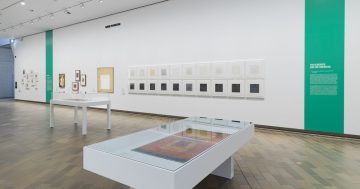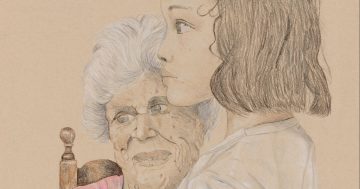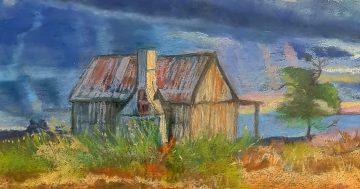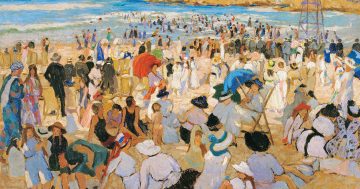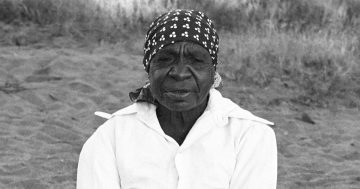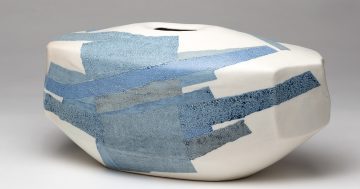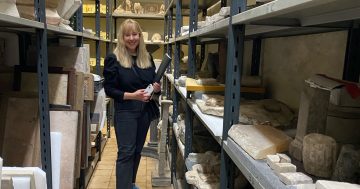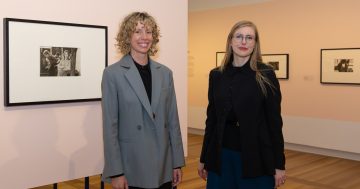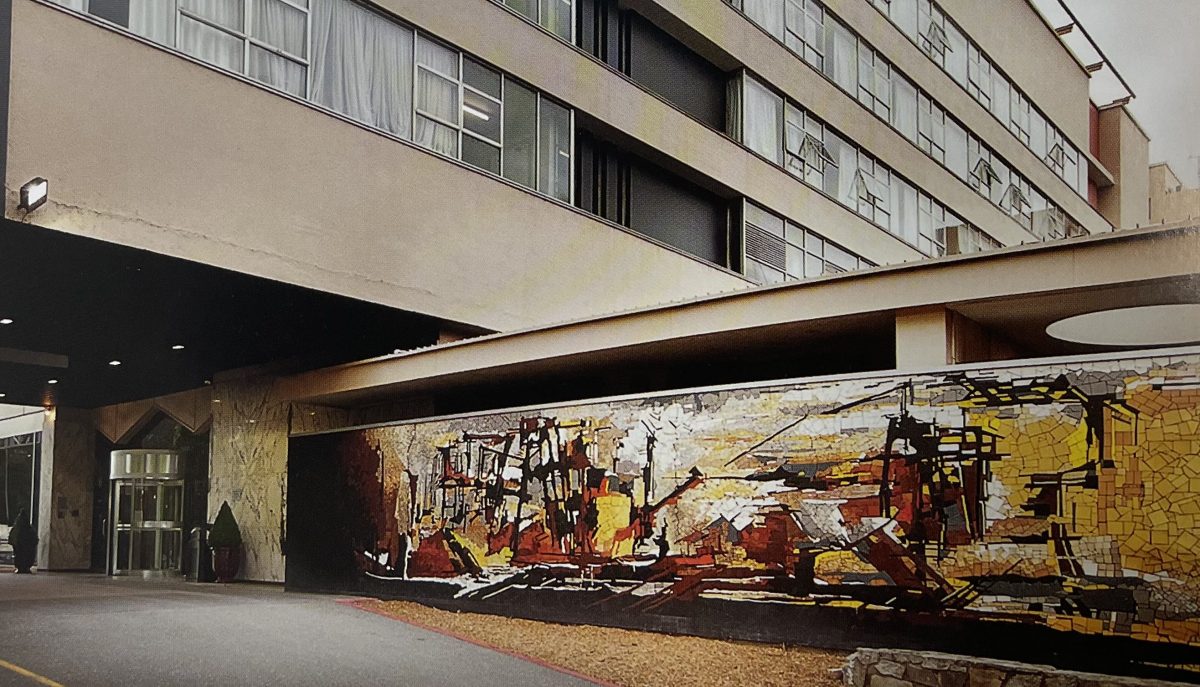
Expansion, by Margo Lewers, is a defining feature from Canberra’s modernist era. Photo: Supplied.
Like most Canberrans, you probably know Expansion, the Rex Hotel mosaic, even if you’ve never stopped for a look at its mid-century, autumnally toned glory. It’s a Canberra landmark (and listed by ACT Heritage in 2013).
Perhaps you’ve also been inside the Reserve Bank building to see the glorious furls of abstract copper sculpture stretching across the banking chamber wall?
But it’s odds on you don’t know the name of Margo Lewers, a creative dynamo whose work encompassed everything from pottery and furniture design to a career as an abstract expressionist painter in the 50’s and 60’s. Margo’s Wide Penetration tapestry is also part of Know My Name at the National Gallery.
While earlier Australian women artists like Thea Proctor and Margaret Preston are now celebrated, the likes of Sidney Nolan and Russell Drysdale dominated the post war Australian art story. Their dominance obscured richly layered stories like that of Margo, her husband Gerry and the remarkable life they built together.
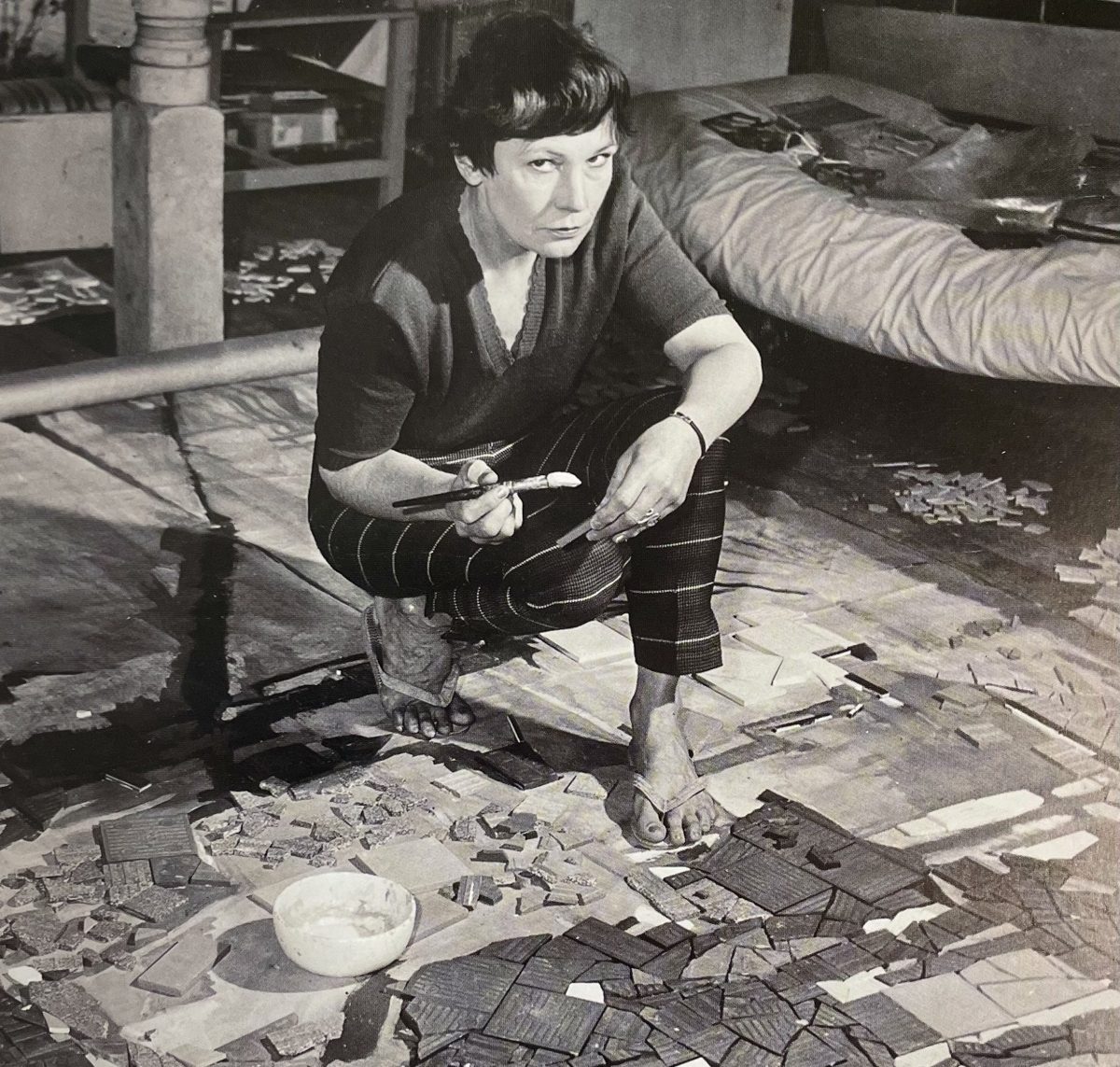
Margo at work on the Expansion mural. Photo: Margo Lewers, no limits.
That may change with the publication of Margo Lewers, no limits, a beautifully produced book masterminded by her daughters Tanya and Darani. It covers her work, her place in the Australian modernist movement, her interior design practice and her house and gardens all fuelled by the same distinctive, energetic, creative vision.
Dr Catriona Quinn is fascinated by Margo’s life and work. She wrote the chapter on Margo’s interior design work, which began in the 1930’s. Strongly influenced by Bauhaus design, she developed a thriving business decorating pottery printing textiles and then producing furniture through her Notanda shop in Rowe St, Sydney.
“Lots of practitioners got going in the 20’s and 30’s,” Dr Quinn says. “It was a crucial point for developing an entire profession that was considered appropriate for women … and closely aligned to colour, to fashion.”
Margo married into a well heeled family when she wed Gerry – a match his mother tried vigorously to prevent on the grounds that Margo was “too modern”, but although she lacked the social network that supported more renowned designers like Marion Hall Best, business thrived.
“In essence it became industrialised craft,” Dr Quinn says. “The fabrics, the pottery, the furniture all served her bigger business and gave her significant control over the spaces she produced.”
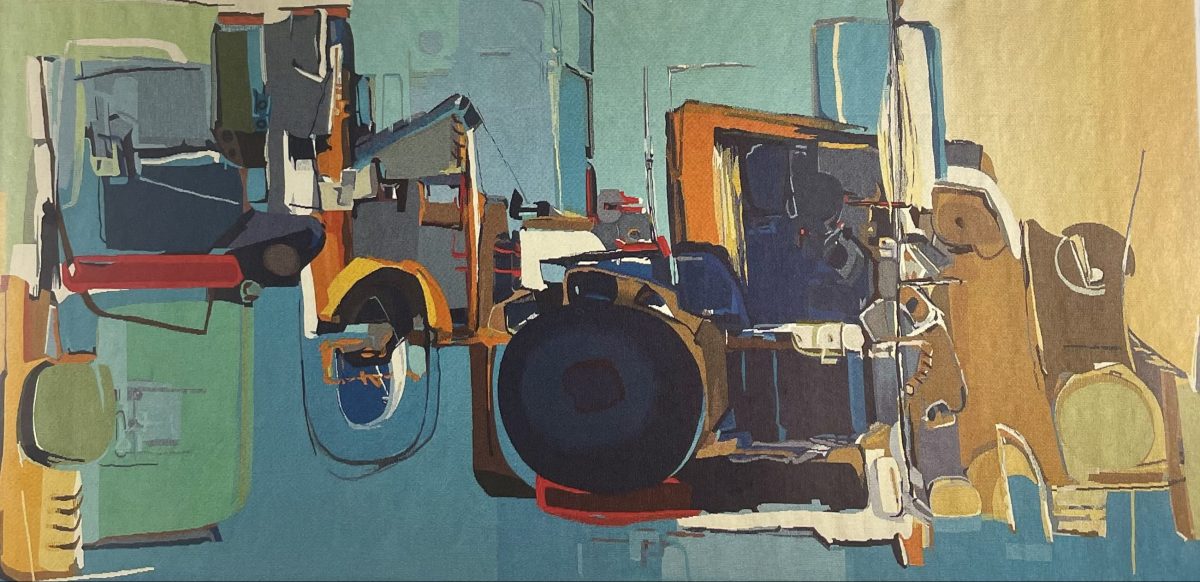
Wide Penetration designed by Margo Lewers and woven by Aubusson, hangs at the National Gallery. Photo: File.
That vision iterated out across all her art forms. Post-war, Margo’s career as an abstract expressionist painter gained increasing traction as she and Gerry were recognised among the leading Australian artists of their era.
The heart of their arts practice was their house and gardens at Emu Plains, now the Lewers Bequest Gallery. It includes a house built for her mother and designed by internationalist architect Sydney Ancher (also responsible for the now demolished Northbourne Flats).
Known to the locals as “the bohemians on the river”, the former pig farm became a place where “ideas hurtled, argument flared, voices shouted, sparks flew,” as Patrick White wrote in Gerry’s obituary.
Dr Quinn says Margo’s fully integrated vision would be envied by many architects lacking that level of control over their designs. “Gerry would go off to the bush sketching, slightly fearing what he would find when he got back because that was when Margo made the biggest changes at Emu Plains,” she says ruefully.
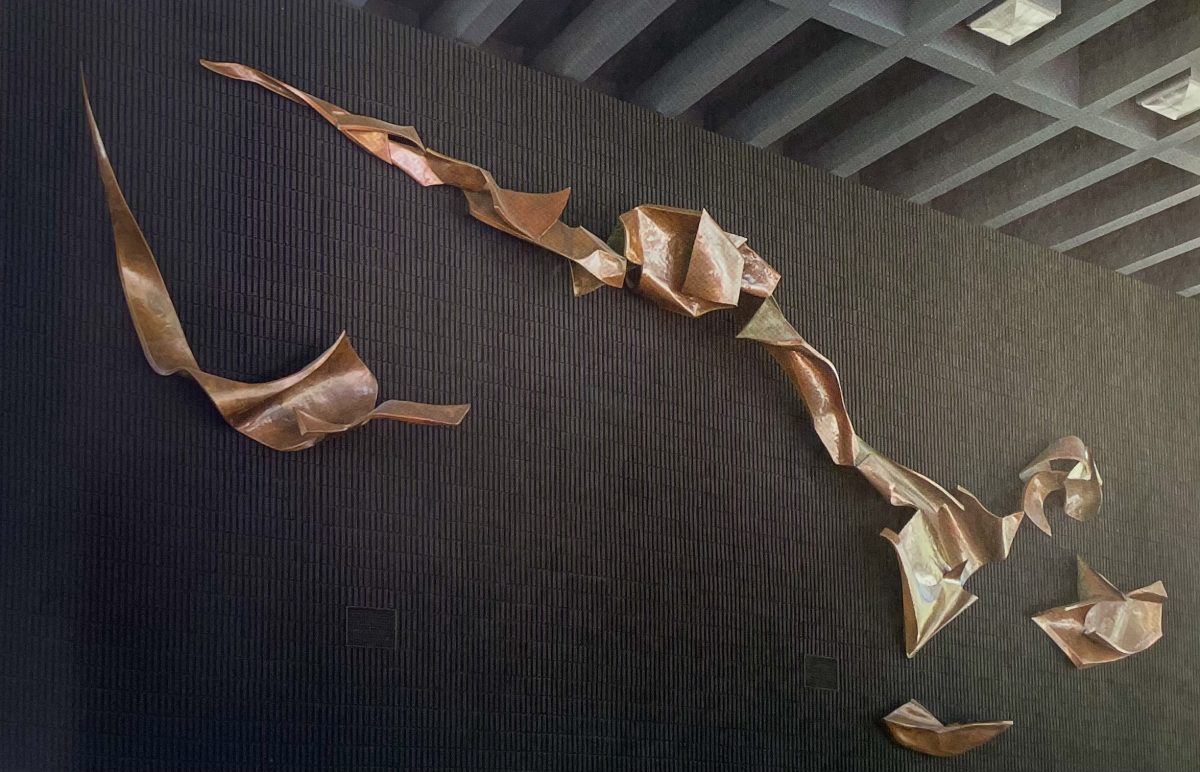
Reserve Bank sculpture, Gerry Lewers. Photo: Margo Lewers, no limits.
Although Margo assumed creative control of the house, she and Gerry collaborated, notably on the 1964 Reserve Bank sculpture which was fully completed by Margo to his designs after Gerry’s early death. It was a huge task, requiring her to create a full-scale mock-up made of chicken wire and paper mache covered with copper coloured vinyl skin.
Her own major achievement in Canberra took place in the context of high modernism. The Rex was at the time one of the first high rise building in the city and the commission for the long front wall required her to hand cut thousands of tiles for the 2.3 x 12.3m work.
A full scale painting of the mosaic was unrolled on the front verandah and Margo then colour-matched and glued each individual tile, often working into the night. Finished lengths, 30cm square, were numbered and stored before being transported to Canberra for installation.
The result was a triumph: the heritage listing describes Expansion as “a rare and unique example of a mosaic mural” and “demonstrating a high degree of creative achievement.”
“Margo herself sometimes belittled her early career as an interior decorator when she became a successful painter,” Dr Quinn says.
“But she balanced commercial reality with artistic achievement, with a view to creating a whole living environment. She was earning a living, supporting herself, and that was really important to Margo.”
Margo Lewers, no limits is available at the National Gallery of Australia shop.
Original Article published by Genevieve Jacobs on Riotact.


